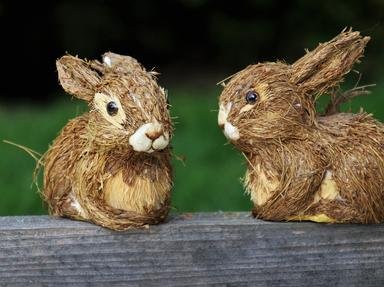Quiz Answer Key and Fun Facts
1. This relief from the temple of Kom Ombo shows the crocodile-headed Egyptian god Sobek with other deities. Which of these aspects was Sobek - who shared the crocodile's aggressive nature - NOT associated with?
2. The crocodile-like sea monster Makara is the vahana (vehicle) of which Indian deity, the god of oceans and seas?
3. The photo shows a detail from the magnificent Roman floor mosaic known as Palestrina mosaic, depicting crocodiles and hippos in the Nile. Crocodiles were hunted and brought to Rome for what crowd-pleasing purpose?
4. This large canvas, titled "The Hippopotamus and Crocodile Hunt", is remarkable for the accuracy with which both animals are represented. Which distinguished 17th-century Flemish artist, known for painting very curvy ladies, created it?
5. Gianlorenzo Bernini's stunning Fountain of the Four Rivers in Rome is one of the undisputed masterpieces of Baroque art. One of the animals carved at the base of the fountain is this odd-looking creature (a crocodile with the body of an armadillo?), associated with which of the four rivers, the southernmost of them?
6. Hanging from the ceiling of the Old Town Hall of the historic city of Brno, this large stuffed crocodile is commonly known as the Brno Dragon. Where in Central Europe would you find Brno?
7. A crocodile features prominently on the coat of arms of Lesotho, the small, mountainous African country completely surrounded by South Africa. What is odd about this particular choice of heraldic animal?
8. The photo shows an illustration for the story "The Elephant's Child", also known as "How the Elephant Got Its Trunk", part of the collection "Just So Stories". It was written by which Nobel Prize-winning British author?
9. This satirical print is titled "The Corsican Crocodile Dissolving the Parliament of Frogs". What famous historical character, sometimes portrayed as a crocodile in early 19th-century England, does it refer to?
10. The prestigious French restaurant "Au Crocodile" is named after the stuffed crocodile displayed outside its premises. In which beautiful city on the Rhine, the seat of the European Parliament, is it located?
Source: Author
LadyNym
This quiz was reviewed by FunTrivia editor
agony before going online.
Any errors found in FunTrivia content are routinely corrected through our feedback system.
